English | Dutch |
|
| From the Tagus to the Douro | |
Lisbon (Portugal) to Porto (Portugal), July 2016
|
|
| |
|
We left Lisbon behind and drove initially along the coast to the north. This is not the most beautiful part of Portugal. Lisbon and Porto are the engines of the country, and the area in between these huge cities is the economic hinterland. Still, this area has a lot to offer to the visitor. Not only the beaches are beautiful, but just south of Leiria are three of the finest monasteries in the country. The monasteries of Alcobaca, Batalha and Tomar are all designated by UNESCO as world heritage sites. In the same area is also the town of Fatima, Portugal's most famous pilgrim destination. In 1917, Mary seems to have appeared here to three children, and from that moment on, the once nondescript village transformed over the years into a place of pilgrimage which attracts more than six million people annually. |
|
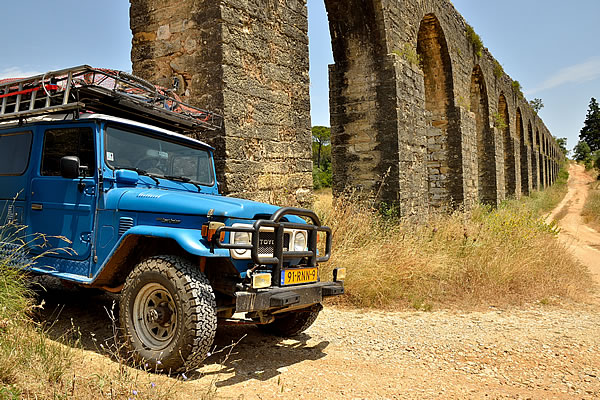 |
|
Our Land Cruiser at Aqueduto de Pegões near Tomar |
|
Through Conimbriga, Portugal's best preserved Roman ruins, we drove to Coimbra. Coimbra was once the capital of Portugal and also has the honour of having the oldest university in the country. The university is also still one of the most prestigious universities in the country, where old traditions are still important. Students still attend classes in black ropes and capes, and traditional rituals and customs are still common practice, the so-called 'codigo de praxe. But the city also has a rebellious side. This is the city in Portugal where we have seen the most ultra-left and anarchist graffiti. When you leave Coimbra towards the east, you enter another world. The landscape becomes mountainous, the villages become smaller and the people older. As large parts of the Portuguese countryside, also this eastern part of the "Beiras" (roughly the area between Lisbon and Porto), has the problem of an aging population. Young people leave the countryside en masse to work and to seek a more comfortable life in the big cities. In the centre of the 'Beiras' is the Parque Natural da Serra da Estrela, the most famous park in Portugal. The park is not that big, but certainly spectacular. The park is home to Portugal's highest mountain, called the Torre (1993 meters), and a beautiful former glacial valley called Vale do Zezere. We stayed on a campsite in the heart of the park and undertook several day hikes from there. From Parque Natural da Serra da Estrela it is just a few hours’ drive to Salamanca in Spain. We had briefly considered to skip this city, but since we were now so near, we decided to go anyway. Salamanca is a beautiful city, like many cities in Spain and Portugal, but slowly but surely the church and convent fatigue struck a little. |
|
 |
|
Students earn some money as street artist in Coimbra |
|
| Through the Parque Natural do Douro International, we entered Portugal again. We are now the Douro valley, Portugal's famous wine region. Even stronger, the Douro Valley is one of the oldest wine regions of the globe. On the hillsides on both sides of the Douro River are thousands of hectares of vineyards. Everything in this region revolves around wine, wine, wine and tourism. Following the Douro River westward, we ended up in Porto, in our opinion by far the most enjoyable city in the country, and perhaps on the entire Iberian Peninsula. We sometimes say, Lisbon is the Rome of Portugal, and Porto the Naples of the country. Where Lisbon is relatively slick and sterile, Porto is an atmospheric city with rough edges. This town really lives and is seemingly not influenced by the hordes of tourists that visit this city as well; Porto still goes his own way. Porto is mix of beautiful old buildings, which are mostly restored nowadays, and old crumbling town houses and alleys whose maintenance is already non-existent for decades. Old women are still doing hand wash on old rickety balconies, while the youth of the neighbourhood jump for a few coins from the Ponte Dom Luis I jump into the Douro River. |
|
 |
|
On the roof of Portugal in Parque Naturel da Serra da Estrela |
|
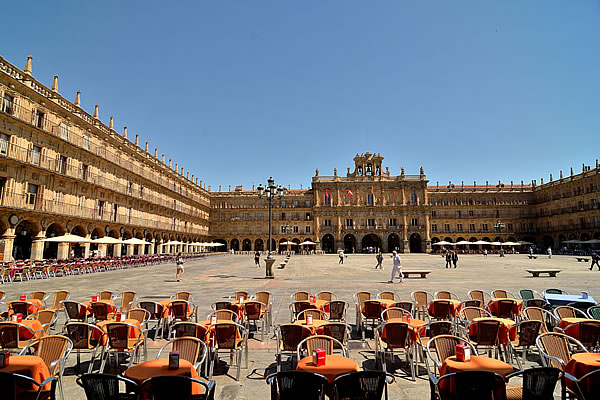 |
|
Salamanca's Plaza Mayor |
|
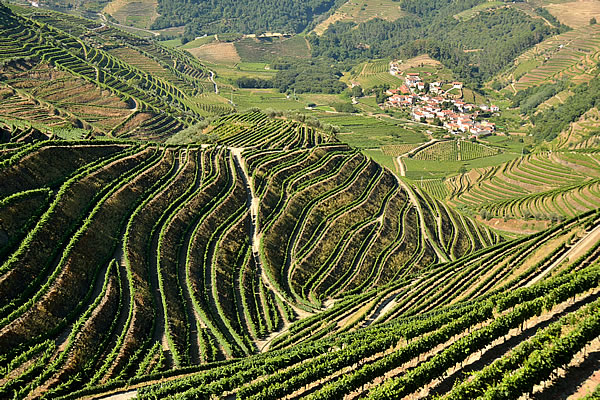 |
|
Vineyards in the Douro Valley near Vila Real |
|
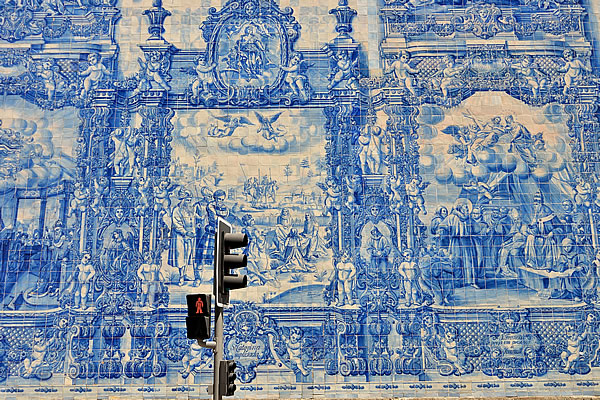 |
|
Fantastic Azulejo tiles on the exterior of Porto's Capela das Almas
| |
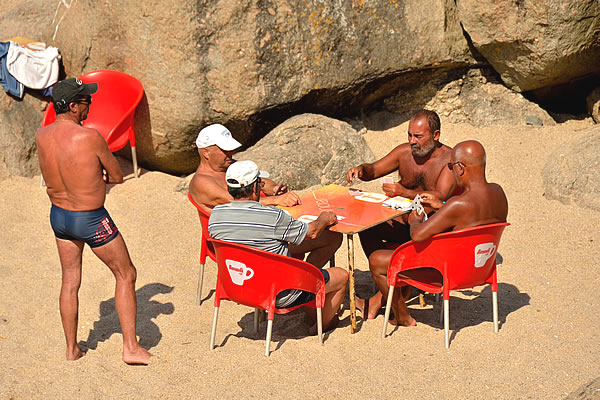 |
|
Playing cards on the beach of Vila Nova de Gaia |
|
| <Previous weblog> | |